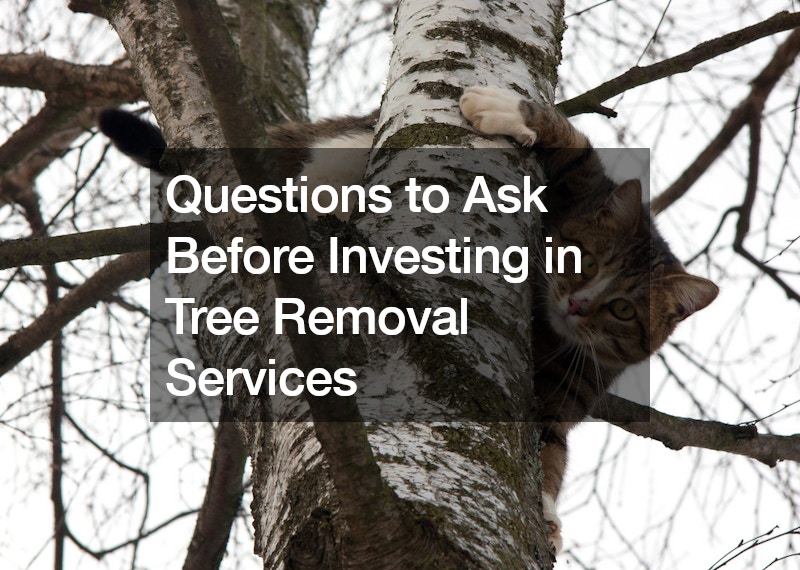
Tree removal services are something that every homeowner or business may find a need for as a result of many different types of issues. From storm damage and downed trees to trees that are growing in such a way that they pose a risk to power lines or even structures, professional tree removal services can be the answer. The question, however, as the attached video addresses, is knowing what questions to ask before you sign the contract, so you know what you are getting, or, in some cases, not getting, to help you get the right company for the job.
The first and arguably most important question to ask regards insurance.
You will want to narrow the candidates for your tree removal job down to only those who have liability and workers’ compensation insurance, as this could save you headaches and major expenses down the road. Another consideration is pricing, and not only the price, as the aforementioned video points out, but how they price their jobs too. Last but not least, you will want to inquire about any affiliations and credentials with recognized arborist organizations (e.g., TCIA, ISA, etc.). In addition to asking the right questions, be sure to look up any reviews, because word of mouth can say a lot too.

Tree removal is often a necessary step in ensuring the safety, health, and aesthetics of a property. While trees are valuable environmental assets, providing beauty, shade, and habitat for wildlife, there are several reasons why removing a tree might become essential.
Safety Concerns: The most pressing reason for tree removal is safety. Trees that are old, diseased, or damaged can pose significant risks. Weak or dead branches can fall without warning, endangering people, pets, and property below. In more severe cases, the entire tree might be at risk of falling, especially during storms or high winds, making it a hazard that requires immediate attention. Removing such trees before they cause damage or injury is crucial.
Disease and Infestation: Trees that are infected with disease or pests can decline rapidly and beyond recovery. Diseases can weaken the structural integrity of a tree, making it more likely to break or collapse. Furthermore, some diseases and pests can spread to nearby healthy trees, creating a larger problem. Removing a diseased or infested tree can be the best way to prevent further spread and protect the remaining vegetation.
Property Damage Prevention: Trees with expansive root systems can cause damage to foundations, driveways, and underground utilities. The roots can grow into septic tanks and plumbing lines, causing costly damage and disruption. In such cases, removal of the tree might be necessary to protect property and infrastructure.
Aesthetic and Practical Reasons: In some instances, tree removal is required for aesthetic and practical considerations. A tree might obstruct scenic views, interfere with landscaping plans, or cast too much shade, inhibiting the growth of grass and other plants beneath it. Homeowners might also remove trees to make way for new construction, additions, or renovations.
Legal and Regulatory Compliance: There are situations where tree removal is mandated by local regulations or homeowners’ association rules, especially if a tree poses a risk to public safety or infringes on utility lines or public areas. Compliance with these regulations is essential to avoid legal issues and fines.
Improving Tree Health in the Vicinity: Removing one tree can sometimes benefit others. This is particularly true in crowded or overgrown areas, where competition for sunlight, water, and nutrients can lead to diminished health and growth. By removing certain trees, you can provide better growing conditions for others, enhancing the overall health and beauty of the landscaping.
Tree Age and Lifecycle Completion: Like all living things, trees have a natural lifecycle. Older trees, especially those that have reached the end of their natural lifespan, may require removal to ensure safety as their structural integrity declines.
Overall, while the decision to remove a tree should never be taken lightly, it is sometimes necessary for the reasons outlined above. Ensuring that tree removal is carried out safely and professionally is paramount, ideally involving experts who can assess and manage the removal process with minimal disruption to the environment and surrounding area.
Take your landscaping seriously! It can truly impact the return on investment you get on your home when you go to sell in the future. In order to learn more about how to keep your trees in good health, reach out to a company in your area. They’ll be happy to help out!
